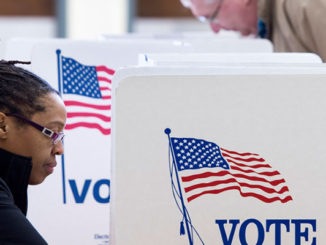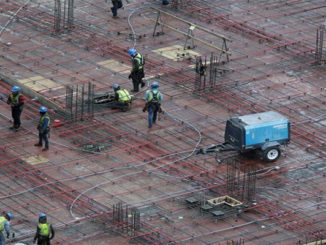
People outside Texas often believe that the state is almost monolithically white, rural and conservative. In fact, less than 40 percent of Texans are white non-Hispanics.
by Steven Pedigo
California is “America on fast-forward,” it is often said. Liberals quote the maxim with pride, pointing to the state’s diversity and its outsize share of economic output, technological innovation, venture capital and growth. Conservatives put scare quotes around it, warning about the dystopia that awaits if America becomes any more like California, with its high taxes and housing costs, challenged schools, dwindling water supply, devastating wildfires and permanent Democratic majority.
But if you’re really looking for a bellwether state that offers a glimpse into the country’s economic future and engines of growth as well as its political fault lines in the long run, it’s not California. It’s Texas.
That’s what the 2020 census tells us, along with the last 20 years of economic and demographic data. Many Americans are moving to cities; Texas is urbanizing even faster than California. And we hear a lot of talk about what will happen to our politics when the United States becomes a majority-minority country, but like California, Texas has already reached that demographic horizon. Its present brand of politics may offer clues to the future of struggles across the country between a grasping after mythology and the shifting demographics of America.
I understand that the very idea that Texas could be a herald of the national future is terrifying for many liberals and moderates, given the Texas G.O.P.’s assaults on voting rights and reproductive liberty, the state’s new open carry laws and our governor’s hostility to mask and vaccine mandates.
But given the changes in Texas’s demography, economy and urban geography, it’s fair to say that its conservative lawmakers are even more frightened of what the future may hold for themselves. They are so scared, in fact, that they are throwing sand into that growth engine’s gears.
Here is what you have to understand about Texas. First, it is growing. It added 4.2 million residents between 2000 and 2010, and another four million in the last decade for a growth rate of almost 40 percent — double that of the country as a whole.
But even more striking is what all those new Texans look like. Since 2010, over 95 percent of them have been people of color.
People outside Texas often believe that the state is almost monolithically white, rural and conservative. In fact, less than 40 percent of Texans are white non-Hispanics. For every new white resident that Texas welcomed over the past decade, there have been three Black residents, three Asians, three people with multiracial backgrounds and 11 Hispanics. Dallas-Fort Worth, Austin and Houston also have large L.G.B.T.Q. populations (as a percentage of their residents).
The conservative members of the Texas Legislature might be threatened by diverse cities, but most Texans aren’t afraid of them, because 90 percent of them live in or around them. Almost 70 percent of Texans are from the Dallas-Fort Worth, Houston, Austin or San Antonio metros. Almost all of the state’s population growth over the last decade occurred in its metros, which grew 18 percent as compared with less than 1 percent for the state’s rural areas.
Six of the 10 fastest-growing suburban counties in the United States are in Texas. Fort Worth is America’s fastest-growing city with at least 500,000 residents; Austin is in second place. Each has a unique economic mix, culture and character, from the global gateways of Houston and Dallas to the technology and innovation hub of Austin. El Paso is the anchor of a thriving binational mega-region; San Antonio is a cultural center and a leader in life sciences.
The state’s changing demographics are just a part of the story; its changing economy and industrial mix is the other. I have spent more than 20 years working as an economic development adviser for cities around the world. What’s striking about Texas is the outsize role that the private sector, P3s (partnerships between governments and the private sector), developers and businesses of all sizes expect to play in policymaking.
That can be a bad thing, because companies can and do take undue advantage of the state’s business-friendly environment. But companies are not just attracted to Texas because of its low taxes, generous incentives and unrestricted land use. They genuinely value the idea of “limited government” and having a seat at the policymaking table. This is why we’re seeing so many California companies moving to Texas, or at least expanding into it — in the past year, for example, Oracle, Tesla and HP.
In my experience, Texas has a much more diverse, broader group of community and policy stakeholders than you’d find in California, where city, state and county officials and metropolitan planning organizations are hugely powerful. Texas is no longer just about big oil and cattle; we have one of the most diversified economies in the country. Texas’s creative class — professionals, techies, scientists, educators and cultural types — has grown nearly 30 percent since 2010.
Yet Gov. Greg Abbott and the Republican Party have embraced a top-down policy agenda that is backward-looking, excludes huge swaths of Texas’s citizenry and runs against the grain of many of its new stakeholders’ values. They are looking to shore it up by a combination of gerrymandering, voter suppression and relentless cultural warfare. As long as Texas continues to grow, they see no downside to it. But it seems to me and many other Texans that they are making a fatal miscalculation.
Most of the people and companies that have been drawn to Texas aren’t conservative pilgrims in search of endless culture-war strife. Many of them — Republican soccer moms and Democratic software engineers, Hispanic building contractors and Black attorneys — are appalled by the G.O.P.’s divisive agenda. Results from the August 2021 University of Texas/Texas Politics Project poll bear this out. Fifty-two percent say Texas is headed in the wrong direction — the worst wrong-track number we’ve seen since the project began.
Many Texans are deeply concerned about climate change: The state is still recovering from Hurricane Harvey and the severe winter storm of 2021. Many worry about their mounting health care costs: Almost two in 10 Texans have no health insurance, and the governor and Legislature have refused to expand Medicaid funding. Covid has taken the lives of almost 65,000 Texans, and the state’s low vaccination rate makes it likely there will be many more. The high-technology companies that have been driving so much of Houston’s and Austin’s growth don’t have to stay in Texas, and they won’t if it becomes harder for them to recruit top people to move here.
Booms do come to an end, as California learned the hard way. You have to go back to the 1980s to mark the years of California’s greatest growth over the last 50 years, when it experienced a growth rate of nearly 26 percent.
Mr. Abbott and company are staking their futures on an anachronistic version of Texas. It’s time for the state’s private sector to use its seat at the table to ensure that the unique governance model is not sacrificed on the altar of populist revanchism.
The Texas model of public-private cooperation with its mutual focus on growth is potentially one that other states could follow. But it is hanging in the balance. Some companies are already offering to relocate employees, a small but significant warning sign to Republican officials.
As goes Texas, so will the United States — for better or for worse.
.
Steven Pedigo ( @iamstevenpedigo ) is the founding executive director of the LBJ Urban Lab and a professor of practice at the Lyndon B. Johnson School of Public Affairs at the University of Texas at Austin.



